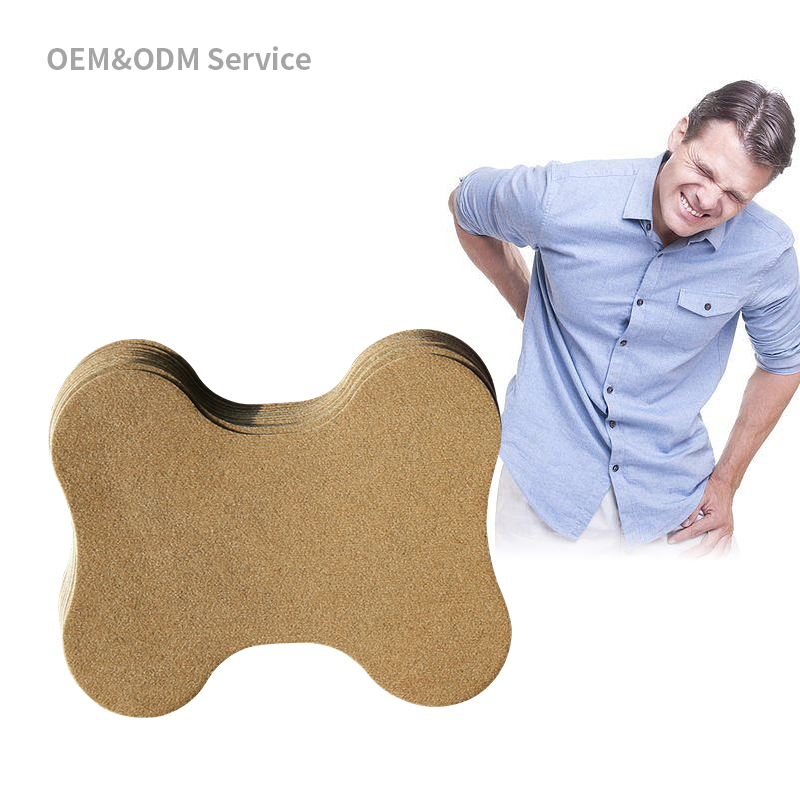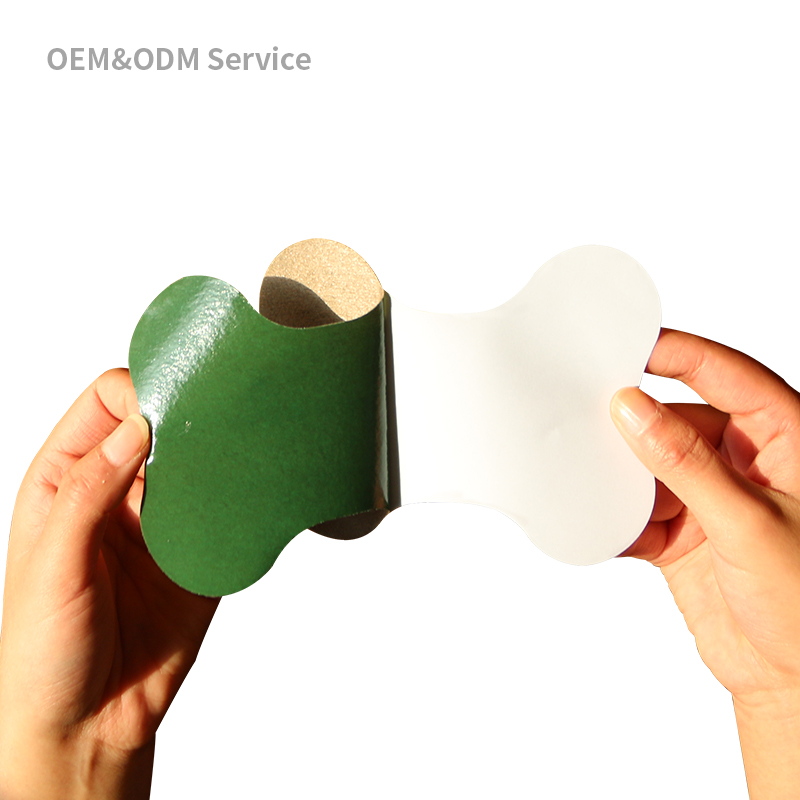What Packaging Options Are Available for Custom Lumbar Pain Relief Patches?
Packaging plays a crucial role in the success of any product, especially in the healthcare sector where consumer trust and product efficacy are paramount. For Custom Lumbar Pain Relief Patches, choosing the right packaging is essential to ensure product integrity, user convenience, and brand differentiation. This article explores the various packaging options available for custom Lumbar Pain Relief Patches, highlighting the benefits and considerations of each. We’ll also delve into how working with a Lumbar Pain Relief Patches manufacturer, OEM provider, or supplier can help you create the ideal packaging solution for your brand.

1. Importance of Packaging in Lumbar Pain Relief Patches
Before discussing specific packaging options, it’s important to understand why packaging matters for Lumbar Pain Relief Patches.
Product Protection: Packaging protects the patches from environmental factors such as moisture, light, and contamination, ensuring that they remain effective until the expiration date.
User Convenience: Easy-to-use packaging enhances the consumer experience, making it simple to apply the patch and store unused portions. This is particularly important for patients who may have limited mobility or dexterity.
Brand Image: Packaging is a powerful tool for branding. Private Label Lumbar Pain Relief Patches can be packaged in a way that reflects your brand identity, making your product stand out on the shelves.
Regulatory Compliance: Proper packaging is essential for meeting regulatory requirements in different markets. This includes ensuring that the packaging provides sufficient information about the product, its ingredients, and usage instructions.
2. Types of Packaging for Custom Lumbar Pain Relief Patches
There are several packaging options available for Custom Lumbar Pain Relief Patches, each with its own set of advantages. The right choice depends on factors such as target market, brand positioning, and budget.
Individual Sachets:
- Description: Each patch is sealed in its own sachet, typically made of foil or a laminated material.
- Benefits: Individual sachets offer maximum protection against moisture and contamination. They are also convenient for consumers, as they can easily carry single-use patches in a purse or pocket.
- Best For: Single-use applications, travel-friendly products, and promotional samples.
Blister Packs:
- Description: Patches are placed in a plastic or aluminum blister with a foil backing that can be peeled off to access the patch.
- Benefits: Blister packs offer excellent product visibility and protection. They also allow for easy dosage management, as each patch is separated into its own compartment.
- Best For: Multi-use packages where consumers may use patches over a period of time.
Boxes or Cartons:
- Description: Multiple patches are packaged together in a box or carton, with each patch individually wrapped or placed in a blister pack inside.
- Benefits: Boxes or cartons are ideal for bundling multiple patches together, offering consumers more value. They also provide ample space for branding and product information.
- Best For: Retail environments where the product needs to stand out on the shelf, bulk purchases, and subscription services.
Pouches:
- Description: A flexible pouch that can contain multiple patches, often resealable to maintain freshness after opening.
- Benefits: Pouches are versatile and cost-effective. They are also lightweight and can be made with eco-friendly materials, appealing to environmentally conscious consumers.
- Best For: Products marketed as value packs or those with a focus on sustainability.
Tins or Metal Containers:
- Description: Rigid metal containers that offer a premium feel and extra protection for the patches inside.
- Benefits: Tins provide a durable and reusable packaging option that can enhance the perceived value of the product. They are also an excellent choice for gift sets or luxury items.
- Best For: Premium product lines, gift sets, and limited-edition releases.
3. Customization Options for Packaging
Working with a Lumbar Pain Relief Patches manufacturer or OEM provider allows you to fully customize your packaging to align with your brand’s vision and the needs of your target market.
Material Selection: You can choose from a variety of materials, including eco-friendly options like biodegradable pouches or recyclable cardboard boxes. This not only appeals to environmentally conscious consumers but also reflects your brand’s commitment to sustainability.
Design and Printing: Customizing the design and printing on the packaging helps reinforce your brand identity. This can include your logo, brand colors, product information, and even QR codes that link to additional resources or promotions.
Size and Shape: The size and shape of the packaging can be tailored to fit the product and the preferences of your target audience. For example, slim, compact packaging may be preferred by consumers looking for convenience and portability.
Additional Features: Depending on your product’s needs, you can add features like resealable closures, tamper-evident seals, or child-resistant packaging. These features can enhance the safety and usability of the product, especially for specific consumer segments.
4. Regulatory Considerations for Packaging
Packaging for Lumbar Pain Relief Patches must comply with various regulatory standards, depending on the markets in which you plan to sell the product. These regulations often dictate aspects such as labeling, materials used, and safety features.
Labeling Requirements: Ensure that the packaging includes all necessary information, such as active ingredients, usage instructions, warnings, and expiration dates. This information must be clear and legible to comply with regulatory standards.
Child-Resistant Packaging: If your product is intended for use by adults only, or contains active ingredients that could be harmful to children, child-resistant packaging may be required by law.
Tamper-Evident Features: Many markets require tamper-evident seals on healthcare products to ensure consumer safety. These features should be incorporated into the packaging design early in the development process.
Environmental Regulations: In some regions, there are regulations regarding the use of certain materials, such as plastics, in packaging. Partnering with a Lumbar Pain Relief Patches Supplier that is knowledgeable about these regulations can help ensure compliance and avoid potential legal issues.
5. Choosing the Right Packaging Partner
Selecting the right partner for your packaging needs is crucial. A reliable Lumbar Pain Relief Patches manufacturer or OEM provider will offer a range of packaging options and guide you through the customization process to ensure the final product meets your brand’s standards.
Experience and Expertise: Look for a partner with extensive experience in the healthcare industry, particularly in packaging topical pain relief products. Their expertise will be invaluable in navigating regulatory requirements and ensuring product quality.
Flexibility and Scalability: Your packaging partner should offer flexible solutions that can scale with your business. Whether you need small batches for a niche market or large-scale production, they should be able to accommodate your needs.
Innovation: The packaging landscape is constantly evolving, with new materials and technologies emerging regularly. Partner with a Lumbar Pain Relief Patches OEM that stays at the forefront of these innovations to keep your product competitive.
Related Questions and Answers
What are the most popular packaging options for Private Label Lumbar Pain Relief Patches?
- Popular options include individual sachets, blister packs, and resealable pouches. Each offers unique benefits depending on the target market and product positioning.
How does packaging affect the shelf life of Lumbar Pain Relief Patches?
- Packaging plays a critical role in protecting patches from environmental factors that can degrade their efficacy. Materials like foil or laminated pouches offer excellent protection against moisture and light, extending the product’s shelf life.
Can I use eco-friendly packaging for Custom Lumbar Pain Relief Patches?
- Yes, many manufacturers offer eco-friendly packaging options, such as biodegradable pouches or recyclable boxes. These options appeal to environmentally conscious consumers and reflect a commitment to sustainability.
What should I include on the packaging of Lumbar Pain Relief Patches?
- Essential information includes the product name, active ingredients, usage instructions, warnings, expiration date, and any regulatory compliance markings. This information ensures consumer safety and regulatory adherence.
How do I choose the best Lumbar Pain Relief Patches manufacturer for my packaging needs?
- Look for a manufacturer with a proven track record in producing and packaging healthcare products. They should offer a range of customizable options, meet regulatory standards, and provide flexible production capabilities.
Conclusion
Packaging is a vital component of product development for Custom Lumbar Pain Relief Patches. From individual sachets and blister packs to eco-friendly pouches and premium tins, the options are vast and varied. The right packaging not only protects the product and ensures regulatory compliance but also enhances user experience and strengthens brand identity.
By partnering with a knowledgeable Lumbar Pain Relief Patches manufacturer or OEM provider, you can explore the full range of packaging options and customize them to meet the specific needs of your target market. Whether your goal is to create a premium product line, expand into new markets, or simply offer a convenient and effective solution for pain relief, the right packaging can make all the difference.






